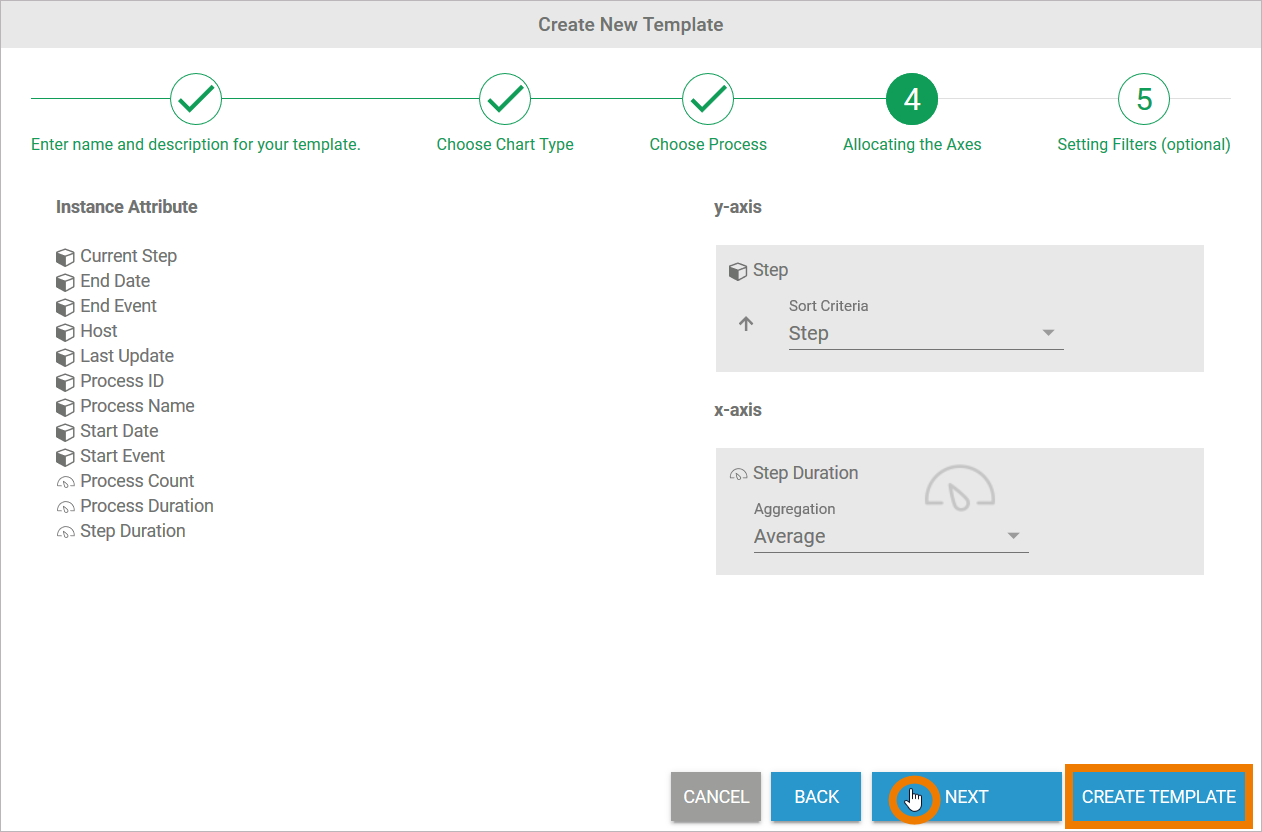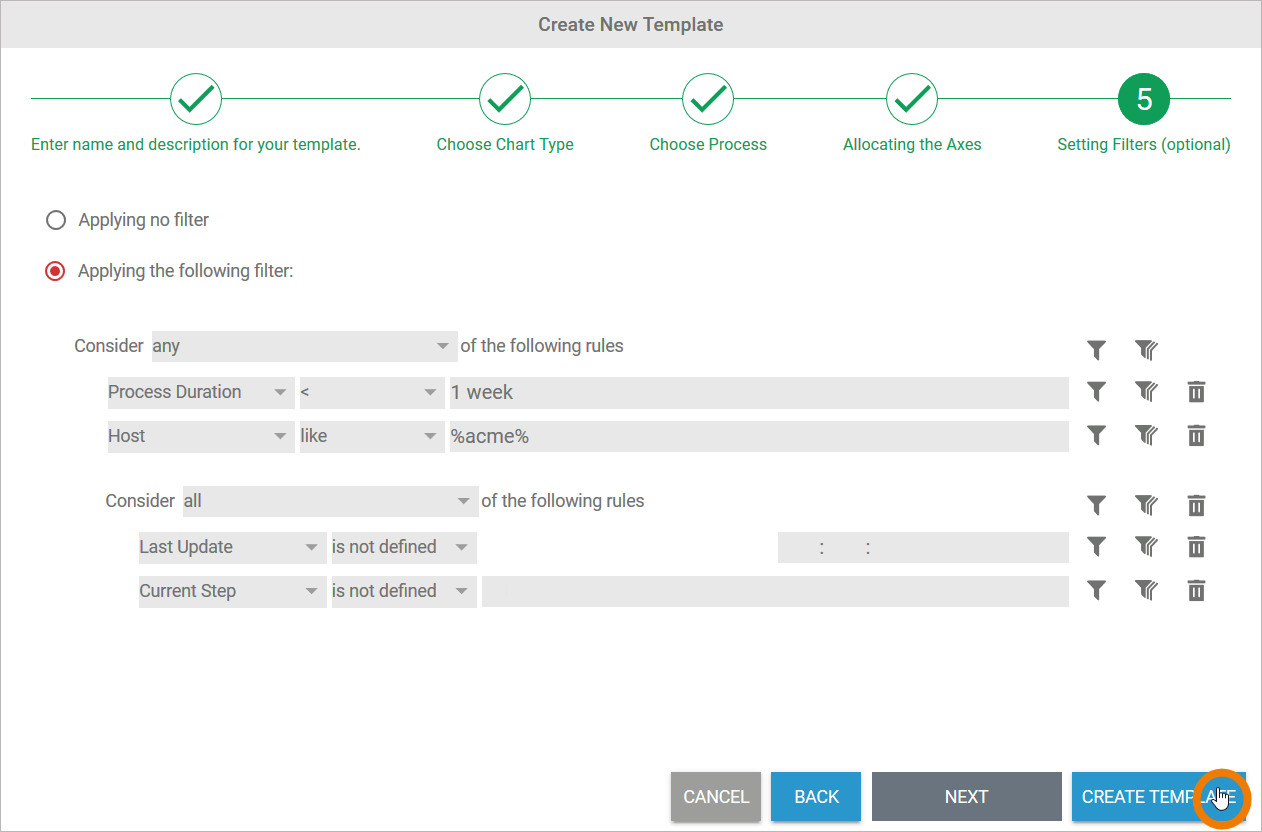This page offers a step by step guide on how to create a new template using the templates sidebar. It is also possible to generate a template from an analysis that has already been created (refer to Creating a Template from an Analysis for details on this option).
Creating a New Template
If you wish to create a new template, open the templates sidebar. The four system templates are shown in the content area (refer to Using a Template for details). To create a new tenmplate, use option Create New Template:

The Create New Template wizard opens in a separate window. Follow the wizard step by step through the configuration process. Use the buttons at the bottom to navigate through the wizard:
-
Cancel: Closes the wizard without creating a template.
-
Back: Goes back to the previous step.
-
Next: Saves the entries and opens the next step.
-
Create Template: Creates the template in the content area. This option is only enabled if the basis data for a template has been set.

Step 1: Labelling the Template
In the first step, you have to enter a title and a short description for the template. Option Next is only enabled when both the template title and template description lines have been filled:

The further steps for creating a template are carried out in the same way as for creating an analysis.
Step 2: Choosing a Chart Type
Choose a chart type for your template. The selected chart type is marked with a colored frame. The following chart types are available:
-
Tachometer
-
Pie Chart
-
Line Chart
-
Area Chart
-
Area Spline Chart
-
Column Chart
-
Bar Chart
-
Spline Chart
-
Radar Chart

Once a chart type has been selected, click Next to proceed to the next step.
Step 3: Selecting a Process
When creating an analysis, the process on which the analysis is to be based must be defined. When creating a template, you have a choice: you can select the process later or assign a process to the template immediately. The wizard automatically lists all processes that provide data to process mining. The name of the process and the name of the profile in which the process is saved are displayed:

Is the process you are looking for not showing in the list? In order for data from the integration or BPaaS component to be transferred to process mining, the corresponding process must have been run at least once.
Step 4: Allocating Axes
The two areas for the content of the x and y axis are located on the right hand side of the dialog:
|
Icon |
Description |
|---|---|
|
|
|
|
|
|
In distribution charts (all chart types except tachometer), key indicators can also be displayed as a dimension on the x-axis.

Refer to Configuring Axis Allocation for detailed explanations on the possible settings for axis allocation.
Drag & drop the instance attributes you want to use from the list into the axis areas on the right. Once you have defined all the necessary instance attributes, you can create the template. If you wish to save filters for the template, select Next at this point to open step 5 of the wizard:

Step 5: Creating Filters
It is not mandatory to define a filter when you create a new template, this step is optional. Filters can still be added when you use a template. You have then also the option to delete or edit existing filters. In step 5, the option Applying no filter is selected by default. You can still create a template directly without a filter. Click Create Template to do so:

If you change the option on the create following filter function, the filter entry is displayed:

Refer to Configuring Filters for detailed information about all filter settings.
You can create as many filters as you wish. Filters can also be nested to any depth. When you have created the filters you want, click Create Template to add the new template to the content area:

The user-defined template is added to the template list in the content area:



